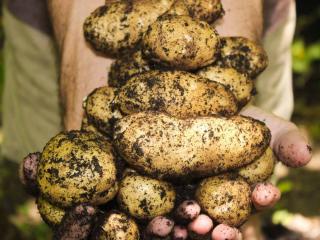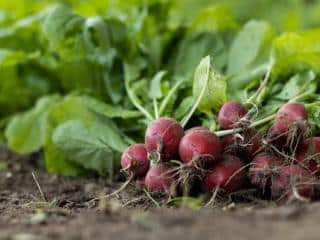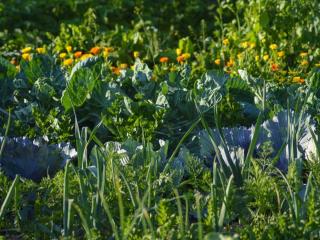

Acidic soil can greatly affect growth, development, and productivity of vegetables and fruits in a garden.Some garden plants thrive in it and settle without difficulty. However, in case of highly acidic soil, you might need to correct the soil’s pH to rebalance it. Various solutions are available in this case to raise this pH to achieve more neutrality. Definition, disadvantages, solutions, vegetables to favor… here are all our tips for growing a garden in acidic soil.
Soil alkalinity and acidity is rated according to its pH, which is anywhere between 1 and 14. What type of rocks are present in your subsoil, the composition of the soil itself, its limestone content, and which fertilizers are used all have an influence on this pH.
Soil is considered acidic when its pH is between 3.5 and 6.8. A soil with a pH between 5 and 6 is considered slightly to moderately acidic, while a pH between 5 and 3.5 is seen as critically acidic.
Acidic soil is often revealed by native acid-loving vegetation. On such soil, heather, ferns, creeping buttercups, chestnuts, pines, blueberries, and nettle and meadow sorrel occur naturally.
To know your garden’s exact pH, use a dedicated analysis kit (available at garden centers).
→ To go further: Identify the type of garden soil: acidic or limestone?
 You will hardly be limited in your plantings if your garden soil is only slightly acidic.
You will hardly be limited in your plantings if your garden soil is only slightly acidic.
On the other hand, if the soil’s pH is between 5 and 6, avoid growing:
and prefer vegetables with a high need for iron.
| In slightly acidic soil (6 to 7) | In acidic soil (5 to 6) |
| Cabbage Swiss Chard Asparagus Celery Radish Tomato Bell Pepper Cucumber Bean Lettuce Strawberry Garlic Chives Thyme Basil |
Potato Squash Carrot Parsnip Artichoke Spinach Bell Pepper Shallot Rhubarb Raspberry Blackberry Blueberry Fennel Parsley Sorrel |
In case of very acidic soil, with a pH lower than 5, it’s better not to try to plant vegetables. Instead, take the time to rebalance it to avoid facing a number of disadvantages.
 Firstly, know that acidic soil with a pH between 5.6 and 6.6 is perfectly fertile.
Firstly, know that acidic soil with a pH between 5.6 and 6.6 is perfectly fertile.
Only soil types with a pH lower than 5.6 can truly be a source of problems.
Indeed, the biological activity of such soils is weak, and microorganisms that make them up act more slowly (bacteria, yeasts, fungi). The soil is less humus-rich, earthworms, and other small inhabitants are nonexistent, and nutrients do not reach the plants, which is synonymous with deficiencies and diseases for your vegetable plants.
Not to mention that plants have an increased rate of metal absorption, which can be harmful to health (like lead, cadmium, and mercury).
Three solutions are possible to rebalance an acidic soil:
 Amend the soil thanks to the controlled addition of a basic amendment (dolomite, ash, agricultural lime, marl, crushed limestone, lithothamnium), or by incorporating mature compost by light hoeing.
Amend the soil thanks to the controlled addition of a basic amendment (dolomite, ash, agricultural lime, marl, crushed limestone, lithothamnium), or by incorporating mature compost by light hoeing.